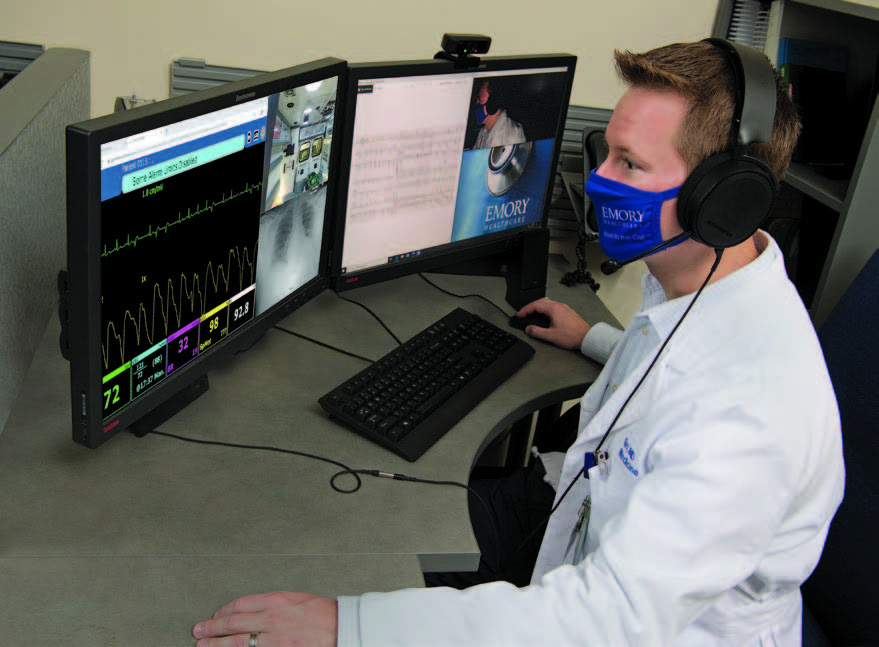Improving Emergency Care in Rural Georgia

In 14 rural counties, Georgians who need emergency medical care will have access to Emory doctors and specialists even before they reach a local hospital through a new telehealth initiative
The Emory Rural Tele-EMS Network (ER-TEMS) will work with the South Georgia division of Grady EMS in cooperation with local rural hospitals. It is being funded with the help of a four-year, $1.2 million grant from the Health Resources and Services Administration.
Emory Assistant Professor of Emergency Medicine Michael Carr, the Emory Rural Tele-EMS network’s project director, is medical director of DeKalb County Fire and Rescue and associate medical director for Air Life Georgia.
“We know that early intervention saves lives. In rural Georgia, the long distances required to reach a hospital contribute to worse medical outcomes in time-sensitive critical conditions like strokes, heart attacks, trauma, and complications during childbirth.”
This network aims to reduce those disparities. “Our vision is to create new models of acute care that are patient focused and provide more equitable access to quality health care through our innovation center, Health DesignED,” says David Wright, chair of Emory’s Department of Emergency Medicine.
Using video technology and high-speed internet connection, the network virtually places Emory emergency medicine professionals “in the ambulance” across remote parts of Georgia.
Residents in rural areas of the state suffer from high rates of chronic health conditions, placing them at increased risk of medical complications. Yet they are often far from the nearest hospital.
The ambulance crew can call the Emory emergency hub physician when a critical patient is identified or if they need other clinical support. Early diagnosis and intervention are key to improving outcomes in most critical conditions. An Emory emergency physician will use a video internet hookup to consult with the ambulance crew, helping to evaluate and manage initial patient care.
EMS personnel can focus their attention on patient care while the Emory emergency provider in Atlanta coordinates with the receiving hospital about the incoming patient’s arrival and treatment plans. The telemedicine interface will allow EKG readings, vital signs, patient charts, and biometric data to be uploaded to the cloud from the inbound ambulance.
Emory is partnering with local hospitals within these rural counties.





